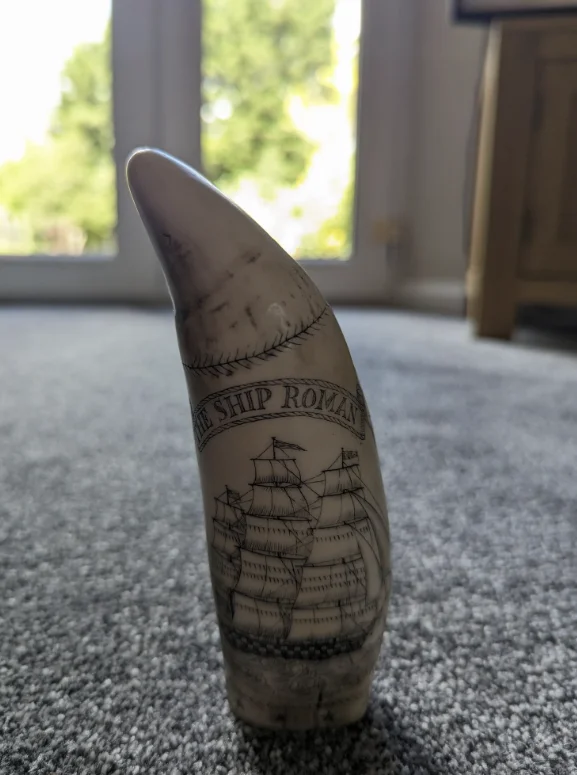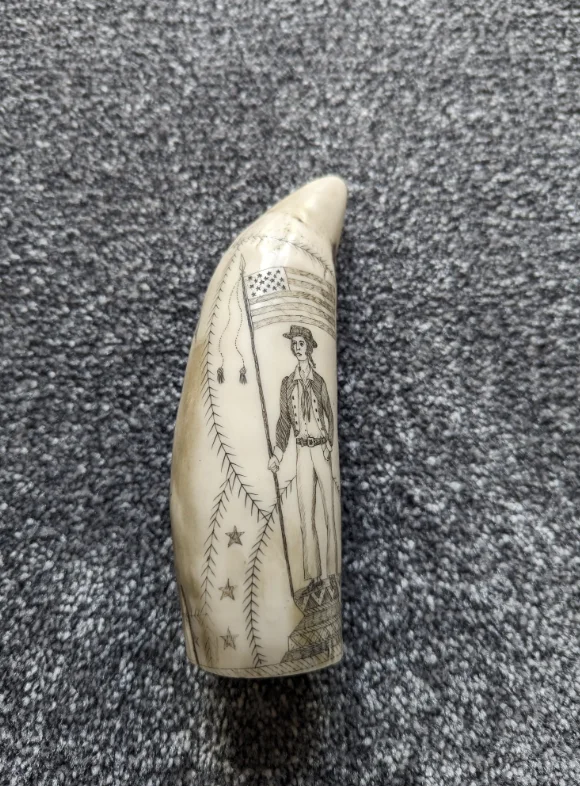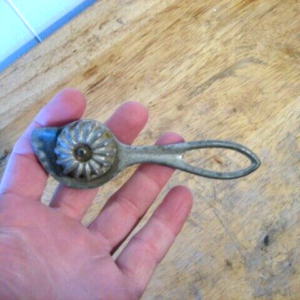Discovering Treasures in the Attic
Remember those lazy Sunday afternoons spent exploring the attic, uncovering forgotten treasures and heirlooms from the past? The musty scent of old trunks, the feel of dust-covered photo albums, and the thrill of discovering something that once held a special place in your family’s history. During one such afternoon, I found an exquisite piece of scrimshaw that had been passed down through my family since the 1950s. This intricately carved ivory tusk, depicting a majestic ship named “Roland,” instantly transported me to a bygone era of maritime adventure and artistry.
The Art of Scrimshaw
Scrimshaw, the art of engraving or carving on whale bones, teeth, or ivory, dates back to the early 19th century. Whalers, often on long and arduous voyages, turned to this craft to pass the time and create keepsakes from their journeys. The piece I found, a 17 cm long, 375-gram tusk, showcases the delicate handiwork of a skilled sailor. The ship Roland, etched in fine detail, sails eternally across the polished ivory surface, a testament to the sailor’s patience and artistry.

Crafting Scrimshaw
Creating scrimshaw involves painstaking etching with sharp tools, followed by the application of ink or pigment to highlight the designs. These works of art often featured maritime scenes, portraits, or intricate patterns, each piece telling a unique story of its maker and the world they navigated.
During its heyday, scrimshaw was more than just a pastime; it was a reflection of the times and the sailor’s life at sea. These artifacts were often exchanged as gifts or traded, becoming valuable keepsakes for families and friends. The ship Roland, immortalized on the tusk in my attic, likely carried tales of daring voyages, distant lands, and the ever-present longing for home.
Cultural Significance
Scrimshaw pieces are significant cultural artifacts that offer insight into the daily lives of sailors, the maritime economy, and the adventurous spirit of the 19th century. They serve as tangible links to the past, embodying the intersection of art, history, and personal expression. The detailed craftsmanship highlights the ingenuity of sailors who, despite the harsh conditions at sea, created beauty and preserved memories.

A Connection to the Past
Holding the scrimshaw tusk in my hands, I felt a deep connection to the past and the unknown sailor who once etched this ship with care and precision. The artistry and dedication involved in creating such a piece are awe-inspiring, reminding us of the enduring human spirit and our innate desire to leave a mark, no matter the circumstances.
Sharing Stories and Heirlooms
Sharing stories like these, and the heirlooms that accompany them, enriches our understanding of history and helps us appreciate the artistry and effort behind each piece. The scrimshaw tusk is more than just an object; it is a bridge between generations, a symbol of a time when the sea was both a livelihood and a canvas for creativity.

Celebrating the Legacy
As we celebrate the positive legacy of scrimshaw, we honor the craftsmen who turned ordinary materials into extraordinary works of art. Their legacy continues to inspire and captivate, reminding us of the beauty that can be found in even the most unexpected places. So, the next time you explore old family treasures, take a moment to appreciate the stories they tell and the hands that crafted them.
Timeless Allure
In the end, it’s these small connections to the past that enrich our present, filling our hearts with nostalgia and our minds with wonder. The scrimshaw tusk of the ship Roland is a cherished reminder of the timeless allure of the sea and the enduring legacy of those who sailed it.



